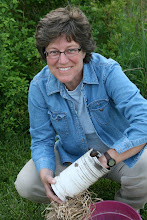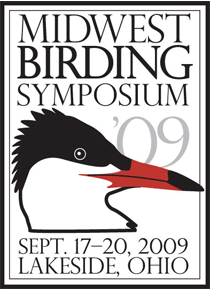Walking with Asaph
After a dozen days afield in Guyana with a diverse group, people gravitate to one another based on compatability, shared interests, enthusiasm level or perhaps even a similar taste for silliness. Like my new friend Murr says, "Really, most everything is funny." When I'm in the field, I laugh a lot, ask questions, root around in the forest duff, come up with ridiculous things. These weird little spiny palm fruits reminded me of Chet Baker.
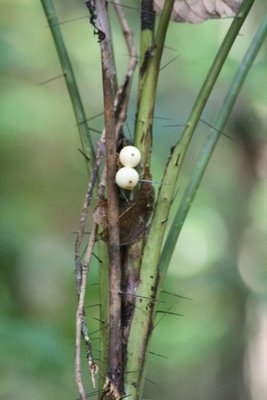
I go through the forest, touching, feeling, smelling, tasting, like a scientist from Venus trying to experience this strange environment with every sense. A tropical forest is like a box of candy for me. There might be a cashew in the middle or it might be nougat. You never know until you investigate. I teeter on the edge of quoting Forrest Gump.
With my curiosity, sense of humor and enthusiasm always aflame, it's good to have a guide, and I gravitated to Asaph Wilson.
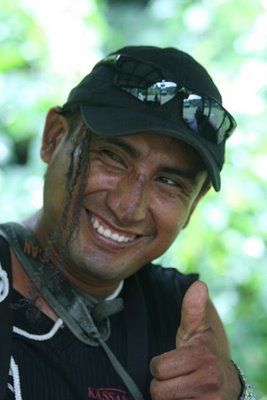 Asaph models a hair extension we made from some frayed cord off my hat. Oh, how we laughed together. The scar on his nose was left after one of his multiple cases of leishmaniasis, a dangerous parasite carried by sand flies, and an occupational hazard of tropical forest living. He's fine now.
Asaph models a hair extension we made from some frayed cord off my hat. Oh, how we laughed together. The scar on his nose was left after one of his multiple cases of leishmaniasis, a dangerous parasite carried by sand flies, and an occupational hazard of tropical forest living. He's fine now.Asaph Wilson grew up in the South Rupununi Savannah. He's a Wapishani Amerindian. He began hunting on the savannah when he was five, accompanying his uncles. When Asaph finished school, he decided he wanted to channel his love of nature into conservation. He travels all over giving programs in schools, because he believes that changes must start with the very young. One of his major focal points is educating people about the destructive nature of grassland fires, which are set by savannah dwellers, and can devastate surrounding forests when allowed to run wild.
Asaph is an avid birder and keen on identifying birds by voice, which is often the only way to know they're there in the dense, dark jungle vegetation. He is a wonderful guide, getting more knowledgeable by the hour, always finding people from whom he can learn more, remembering a bewildering array of birds, plants and animals. In 2000, he accompanied a Smithsonian expedition to Guyana, and it was then that he learned the English and Latin names for the birds with which he was already familiar. He started guiding in 2002, and was one of the primary guides, along with Luke Johnson and Ron Allicock, on the familiarization trip.
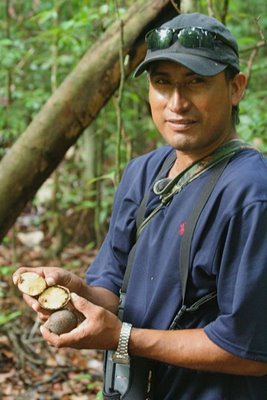
Here, Asaph shows me the seed of the green-heart tree, Ocotea rodioei. He told me it's used for treating fevers, but also as a contraceptive (!), as it will interrupt a woman's cycle. Gimme some. I'll wedge that nut between gum and cheek.
An English chemist named Conrad Gorinsky has obtained US, Canadian and European patents for the use of compounds from this and other medicinal plants, that the Wapashani were kind enough to teach him about. Gorinsky named the alkaloid molecules "Biologically Active Rupununines" (a reference to the Rupununi River, from whence they come). He has been labeled a "biopirate" for his efforts to wrest economic control of these folk medicines away from the Amerindians who pioneered their use. Sort of: Teach me all you know, and then I'll slap a patent on it to keep you or anyone else but ME from benefiting from the ethnobotany experimentation your people have done for centuries. Nice. For other interesting examples of biopiracy, see this link. It appears to have been translated from Portuguese, so the English is a little convoluted, but it's an eye-opener for those of us who might feel good about using Amazonian medicinals, thinking we're helping indigenous people (as I suspiciously eye my bottle of purported Acai Berry extract...)
Asaph showed me this enormous, anaconda-like vine, which has saved people who are lost in the forest. Cut it with a machete, and pure water pours out. Although the air is saturated with water vapor, the extreme heat and lack of safe potable water in the forest can combine to dehydrate you in a very short time. Drinking the water in the vine is a safe way to rehydrate.
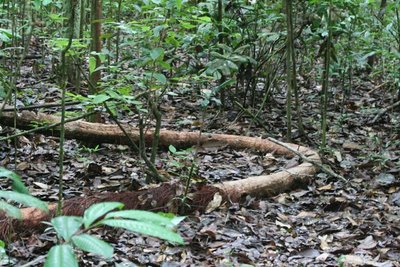
What's the deal with the monkey vine? Why would it grow in such a dazzling spiral? Who knows? But I asked Asaph to give me a smile, and a Wapashani for scale.
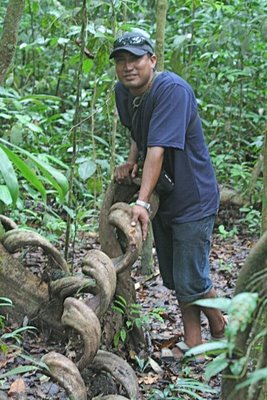
Thank you, Asaph, for your grace and wisdom in the ways of the forest, and your skill in imparting it. And thanks for the laughs.
Labels: Asaph Wilson, biopiracy, ethnobotany, greenheart tree, Guyana birding

